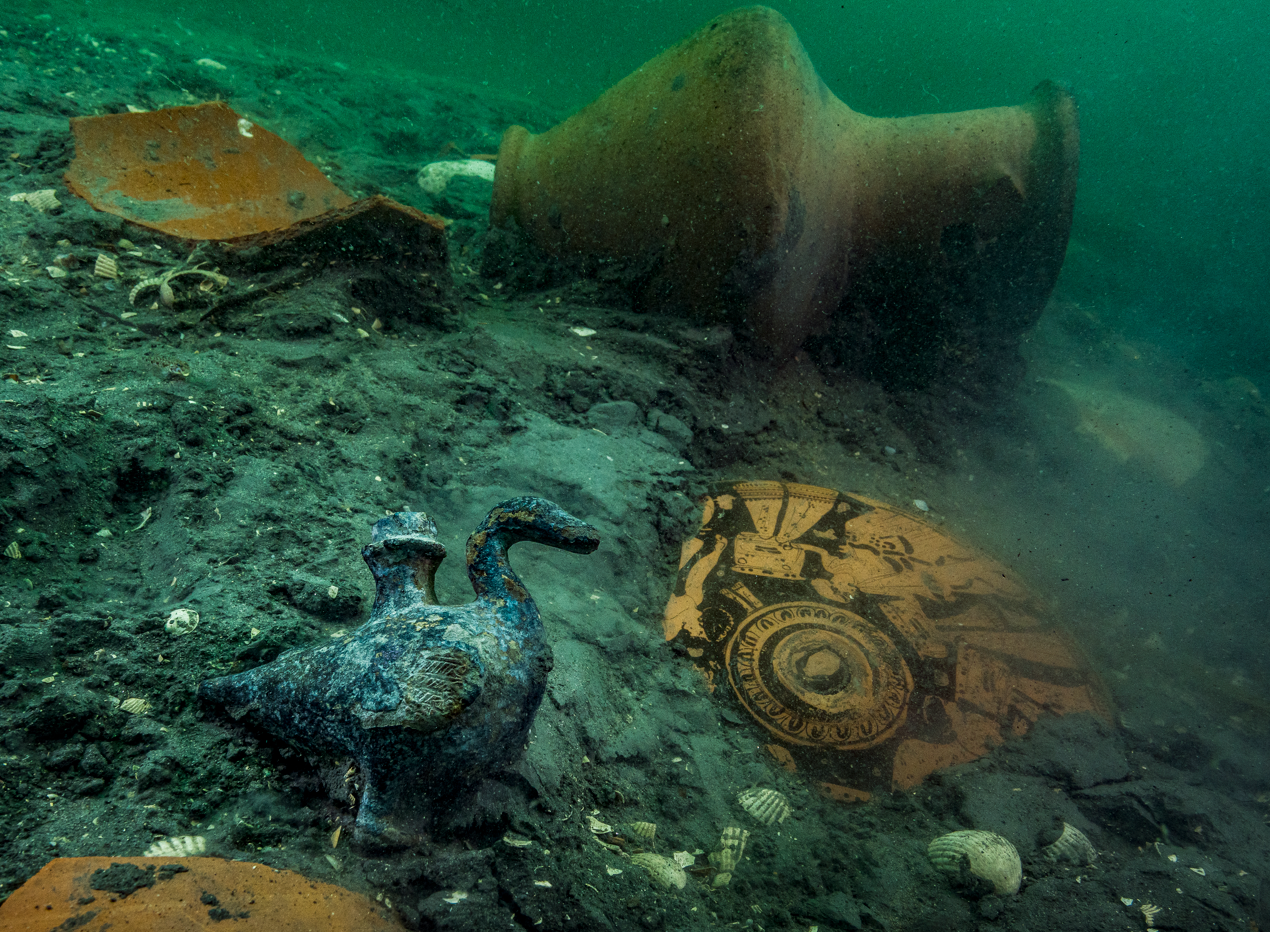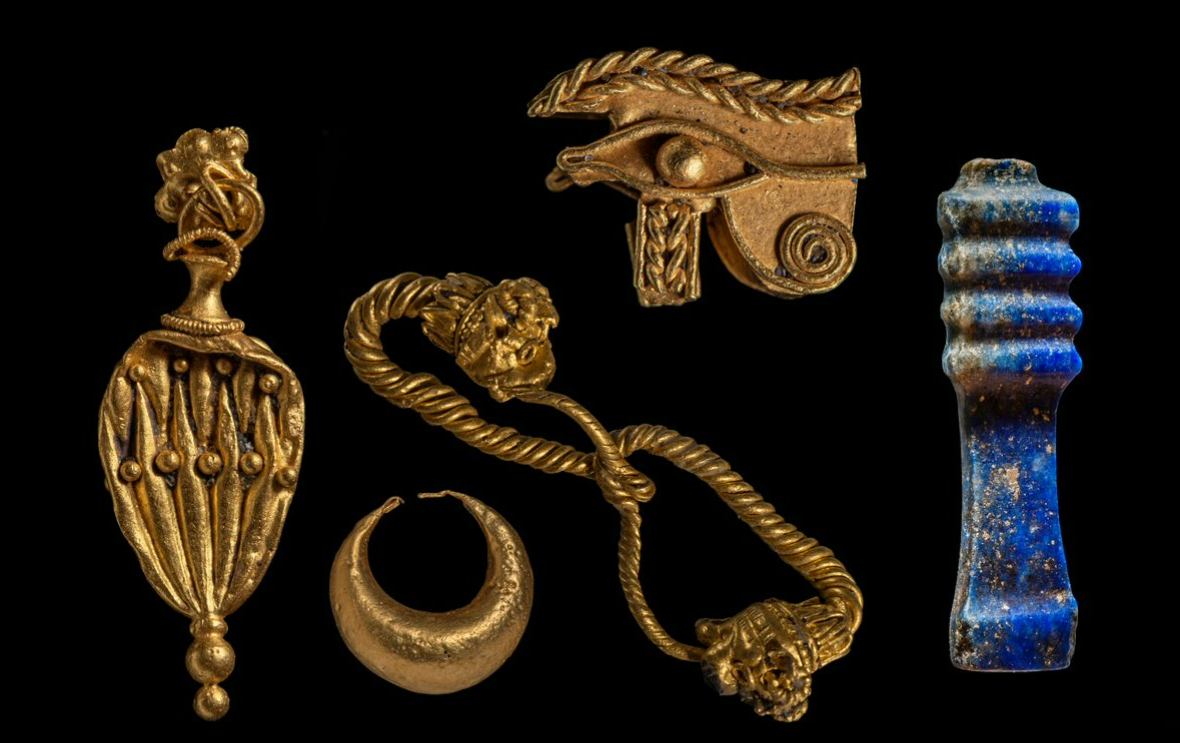More ancient treasures have been recovered from the sunken city of Thonis-Heracleion off the coast of Egypt. Among the underwater ruins of a fallen temple, the team uncovered a collection of valuable items, including gold relics, ornate jewelry, ceramics, perfume decanters, and gifts to the gods.
The artifacts were discovered at the site of an ancient Egyptian port city near the Mouth of the Nile called Thonis-Heracleion. In its heyday some 2,300 years ago, the city was known as the Venice of the Nile and is thought to be one of the biggest ports in the Mediterranean at the time.
At some point during antiquity, the city was submerged in the wake of rising sea levels and earthquakes followed by tidal waves triggering land liquefaction events. All in all, around 110 square kilometers (42 square miles) of the Nile Delta totally disappeared under the sea, including the city of Thonis-Heracleion.
After being discovered in 2000 CE, Thonis-Heracleion has since been the scene of numerous archeological excavations, the latest of which was carried out by the European Institute for Underwater Archaeology (IEASM), led by Franck Goddio in a joint mission with Egypt’s Ministry of Tourism and Antiquities.

A delicate bronze duck-shaped pourer is discovered amongst ceramics of the 4th century BC on the site of a newly discovered Greek sanctuary to Aphrodite in Thonis-Heracleion.
Image courtesy of Christoph Gerigk ©Franck Goddio/Hilti Foundation.
A gang of diving archeologists focused their efforts on the city’s south canal. Here, they discovered the submerged stone block and wood beams of a once-great temple that collapsed during a cataclysmic event that struck the area in the second century BCE.
This was a temple to Amun, the god of the air who was one of the most significant deities in the ancient Egyptian pantheon. Owing to the importance of the temple, the excavation revealed an array of precious artifacts, including silver ritual instruments, gold jewelry, and fragile alabaster containers for perfumes.
“It is extremely moving to discover such delicate objects, which survived intact despite the violence and magnitude of the cataclysm” Franck Goddio, President of IEASM and director of excavations, said in a statement sent to IFLScience.

Gold objects, jewelry and a Djed pilar, symbol of stability, made of lapis lazuli were retrieved. Thonis-Heracleion, 5th century BC.
Image courtesy of Christoph Gerigk ©Franck Goddio/Hilti Foundation.
A short swim from the temple, they also discovered the ruins of a Greek sanctuary devoted to Aphrodite, the goddess of love, which yielded discovered like important bronze and ceramics.
“This illustrates that Greeks who were allowed to trade and settle in the city during the time of the Pharaohs of the Saïte dynasty (664 to 525 BC) had their sanctuaries to their own gods. The presence of Greek mercenaries is also seen by numerous finds of Greek weapons. They were defending the access to the Kingdom at the mouth of the Canopic Branch of the Nile,” the IEASM said in the statement.
Thonis-Heracleion is just one of the long-lost cities in the Mediterranean being investigated by this team. Elsewhere in Egypt, there are also efforts to explore the sunken ruins of Canopus, as well as parts of ancient Alexandria that have been lost to the sea.
Source Link: Long-Lost Treasures And Temple Found Among Sunken Ancient City